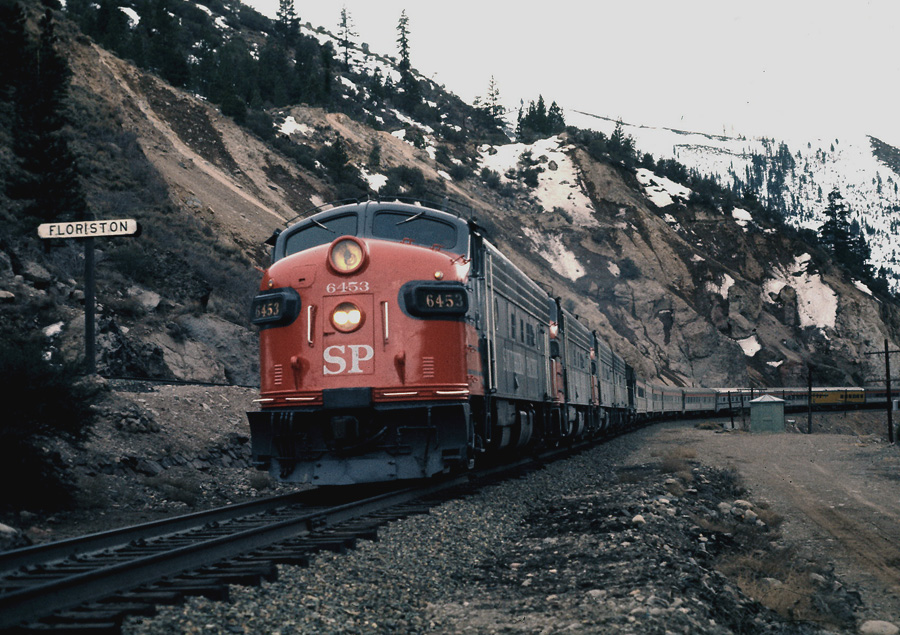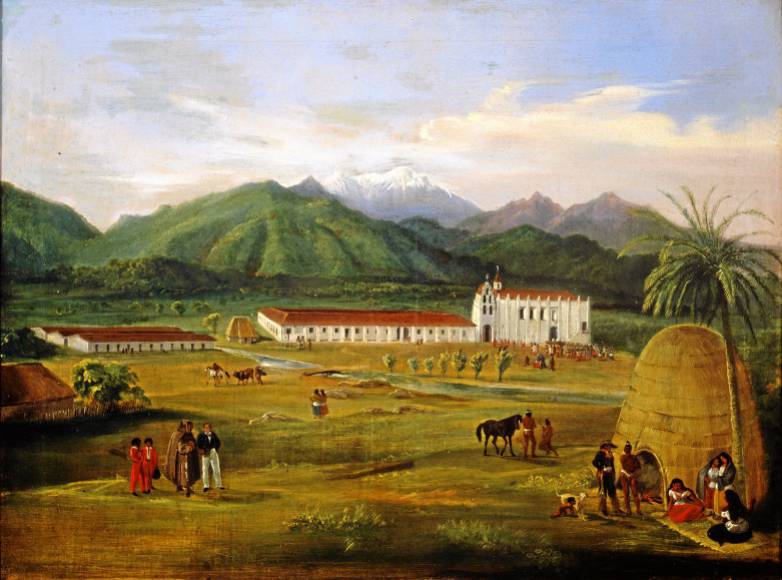|
Homhoangna
Homhoangna (alternatively Homoa or Homhoa) was a Tongva village located at what is now the area in-between the Santa Ana River, Colton Avenue, and the Southern Pacific Railroad. The village is associated with the area of Colton, California. The village's name is reflected in the alternative place name designation for Reche Canyon, which is also known as Homhoa Canyon, Homoa Canyon, and Homuba Canyon. The Tongva language word for "hilly place" was reportedly ''homhoabit''. The village was located at the base of the foothills which surrounded it. See also * Console Springs Console Springs was a natural spring in Reche Canyon, Riverside County (originally San Bernardino County), California, United States. The waters were bottled for sale in the early 20th century. History The springs were named for the Console fa ... References {{Tongva villages Tongva populated places Former Native American populated places in California ... [...More Info...] [...Related Items...] OR: [Wikipedia] [Google] [Baidu] |
Reche Canyon
Reche Canyon (historically known as Homhoa Canyon, Homoa Canyon, and Homuba Canyon) is a canyon in the far northwestern foothills of the San Jacinto Mountains, northwest of The Badlands in the Inland Empire region of Southern California. The Tongva village of Homhoangna, from which the canyon's alternative names derives, was located here. The county line between San Bernardino County and Riverside County is at the approximate midway point of the canyon; the San Bernardino half to the north is mostly within the boundaries of Colton, with a small area in Loma Linda, while the southern half is unincorporated territory of Riverside County. Reche Canyon Elementary School is located in the northern part of the canyon. History The canyon is said to be named for a 49er named Anthony Reche, who initially settled in Fallbrook and moved to the canyon in 1875. & Reche had 160 acres on which he farmed and "raised bees." In the 1890s, a settler named John Console built a one-room schoo ... [...More Info...] [...Related Items...] OR: [Wikipedia] [Google] [Baidu] |
Colton, California
Colton is a city in San Bernardino County, California, United States. Nicknamed "Hub City", Colton is located in the Inland Empire region of the state and is a suburb of San Bernardino, approximately south of the city's downtown. The population of Colton is 53,909 according to the 2020 census, up from 52,154 at the 2010 census. Colton is the site of Colton Crossing, which was one of the busiest at-grade railroad crossings in the United States. The crossing was installed in 1882 by the California Southern Railroad to cross the Southern Pacific Railroad tracks while building northward from San Diego. As a result of railroad acquisitions and mergers, this became the point at which the Burlington Northern Santa Fe's "Southern Transcontinental Route" crossed the Union Pacific's "Sunset Route". As traffic on each line began to soar in the mid-1990s, fueled largely by the vast increase in imports passing through the ports of Los Angeles and Long Beach, the primitive crossing became ... [...More Info...] [...Related Items...] OR: [Wikipedia] [Google] [Baidu] |
Console Springs
Console Springs was a natural spring in Reche Canyon, Riverside County (originally San Bernardino County), California, United States. The waters were bottled for sale in the early 20th century. History The springs were named for the Console family that owned them. John Console (~1862–1926) settled in the canyon in 1894. Console built the canyon schoolhouse; water for the students was toted from the spring. Console sold the bottled water out of a "wagon on 3rd Street" but "sales were slow." He also sold holly (possibly actually native toyon) out of his wagon around Christmastime. A native of Sicily, Console was a stone mason by trade. There was no associated resort hotel but circa 1914 there were campsites nearby for visitors. California boosters claimed the spring water had medicinal value and would be beneficial for people with rheumatism, Bright's disease, and liver disorders. In 1976, Console's son recalled, "We used to have a tent set up at the spring and doctors would b ... [...More Info...] [...Related Items...] OR: [Wikipedia] [Google] [Baidu] |
Cupule In Reche Canyon (San Bernardino Sun, Dec
{{disambig ...
A cupule is a small structure shaped like a cup, including: * In archeology, rock cupules are circular man-made hollows on the surface of a large rock or a rock slab ** On a smaller artifact they are called a cupstone. * In botany: the base of an acorn, see calybium and cupule. * In entomology, a sucker on the feet of some flies. See also * Cupula (other) * Copula (other) * Cupul Cupul or Kupul (Maya: ''Kupul'', 'toponímico; adjective') was the name of a Maya chiefdom at time of the Spanish conquest of Yucatán. Cupul was one of the most extensive and densely populated Maya provinces on the Yucatán Peninsula. It was for ... [...More Info...] [...Related Items...] OR: [Wikipedia] [Google] [Baidu] |
Tongva
The Tongva ( ) are an Indigenous peoples of California, Indigenous people of California from the Los Angeles Basin and the Channel Islands of California, Southern Channel Islands, an area covering approximately . In the precolonial era, the people lived in as many as 100 villages and primarily identified by their village rather than by a pan-tribal name. During colonization, the Spanish referred to these people as Gabrieleño and Fernandeño, names derived from the Spanish missions in California, Spanish missions built on their land: Mission San Gabriel Arcángel and Mission San Fernando Rey de España. ''Tongva'' is the most widely circulated endonym among the people, used by Narcisa Higuera in 1905 to refer to inhabitants in the vicinity of Mission San Gabriel. Some people who identify as direct lineal descendants of the people advocate the use of their ancestral name ''Kizh'' as an Endonym and exonym, endonym. The Tongva, along with neighboring groups such as the Chumash peopl ... [...More Info...] [...Related Items...] OR: [Wikipedia] [Google] [Baidu] |
Santa Ana River
The Santa Ana River is the largest river entirely within Southern California in the United States. It rises in the San Bernardino Mountains and flows for most of its length through San Bernardino County, California, San Bernardino and Riverside County, California, Riverside counties, before cutting through the northern Santa Ana Mountains via Santa Ana Canyon and flowing southwest through urban Orange County, California, Orange County to drain into the Pacific Ocean. The Santa Ana River is long,U.S. Geological Survey. National Hydrography Dataset high-resolution flowline dataThe National Map accessed March 16, 2011 and its drainage basin is in size. The Santa Ana drainage basin has a diversity of terrain, ranging from high peaks of inland mountains in the north and east, to the hot, dry interior and semidesert basins of the Inland Empire, to the flat coastal plain of Orange County. Although it includes areas of alpine climate, alpine and highland forest, the majority of the w ... [...More Info...] [...Related Items...] OR: [Wikipedia] [Google] [Baidu] |
Colton Avenue
Colton may refer to: Places Australia * Colton, South Australia, a locality in the District Council of Elliston * Electoral district of Colton, South Australia England * Colton, Cumbria * Colton, Leeds (a village to the east of the city.) * Colton, Norfolk (in Marlingford and Colton parish) * Colton, North Yorkshire * Colton, Staffordshire * Colton, Suffolk (in Great Barton parish) United States * Colton, California * Colton, Nebraska * Colton, New York ** Colton (CDP), New York * Colton, Ohio * Colton, Oregon * Colton, South Dakota * Colton, Utah, a ghost town * Colton, Washington * Colton Crater, Coconino County, Arizona * Colton Hall California's Constitution Hall in Monterey People with the name * Colton (given name) * Colton (surname) Other uses * Colton antigen system * Marr and Colton The Marr & Colton Company was a producer of theater pipe organs, located in Warsaw, New York. The firm was founded in 1915 by David Jackson Marr and John J. Colton. The compan ... [...More Info...] [...Related Items...] OR: [Wikipedia] [Google] [Baidu] |
Southern Pacific Railroad
The Southern Pacific (or Espee from the railroad initials) was an American Railroad classes#Class I, Class I Rail transport, railroad network that existed from 1865 to 1996 and operated largely in the Western United States. The system was operated by various companies under the names Southern Pacific Railroad, Southern Pacific Company and Southern Pacific Transportation Company. The original Southern Pacific began in 1865 as a land holding company. The last incarnation of the Southern Pacific, the Southern Pacific Transportation Company, was founded in 1969 and assumed control of the Southern Pacific system. The Southern Pacific Transportation Company was acquired in 1996 by the Union Pacific Corporation and merged with their Union Pacific Railroad. The Southern Pacific legacy founded hospitals in San Francisco, Tucson, Arizona, Tucson, and Houston. In the 1970s, it also founded a telecommunications network with a state-of-the-art microwave and fiber optic backbone. This telec ... [...More Info...] [...Related Items...] OR: [Wikipedia] [Google] [Baidu] |
Tongva Language
The Tongva language (also known as Gabrielino, Gabrieleño, or Kizh) is an extinct and revitalizing Uto-Aztecan language spoken by the Tongva, a Native American people who have lived in and around modern-day Los Angeles for centuries. It has not been a language of everyday conversation since the 1940s. The Gabrielino people now speak English but a few are attempting to revive their language by using it in everyday conversation and ceremonial contexts. Presently, Gabrielino is also being used in language revitalization classes and in some public discussion regarding religious and environmental issues. Tongva is closely related to Serrano. The names of several cities and neighborhoods in Southern California are of Tongva origin, and include Pacoima, Tujunga, Topanga, Azusa, ''Cahuenga'' in Cahuenga Pass and ''Cucamonga'' in Rancho Cucamonga. The last fluent native speakers of Tongva lived in the early 20th century. The language is primarily documented in the unpublished f ... [...More Info...] [...Related Items...] OR: [Wikipedia] [Google] [Baidu] |
Tongva Populated Places
The Tongva ( ) are an Indigenous people of California from the Los Angeles Basin and the Southern Channel Islands, an area covering approximately . In the precolonial era, the people lived in as many as 100 villages and primarily identified by their village rather than by a pan-tribal name. During colonization, the Spanish referred to these people as Gabrieleño and Fernandeño, names derived from the Spanish missions built on their land: Mission San Gabriel Arcángel and Mission San Fernando Rey de España. ''Tongva'' is the most widely circulated endonym among the people, used by Narcisa Higuera in 1905 to refer to inhabitants in the vicinity of Mission San Gabriel. Some people who identify as direct lineal descendants of the people advocate the use of their ancestral name ''Kizh'' as an endonym. The Tongva, along with neighboring groups such as the Chumash, played an important role in the cultural and economic dynamics of the region at the time of European encounter. They ha ... [...More Info...] [...Related Items...] OR: [Wikipedia] [Google] [Baidu] |




